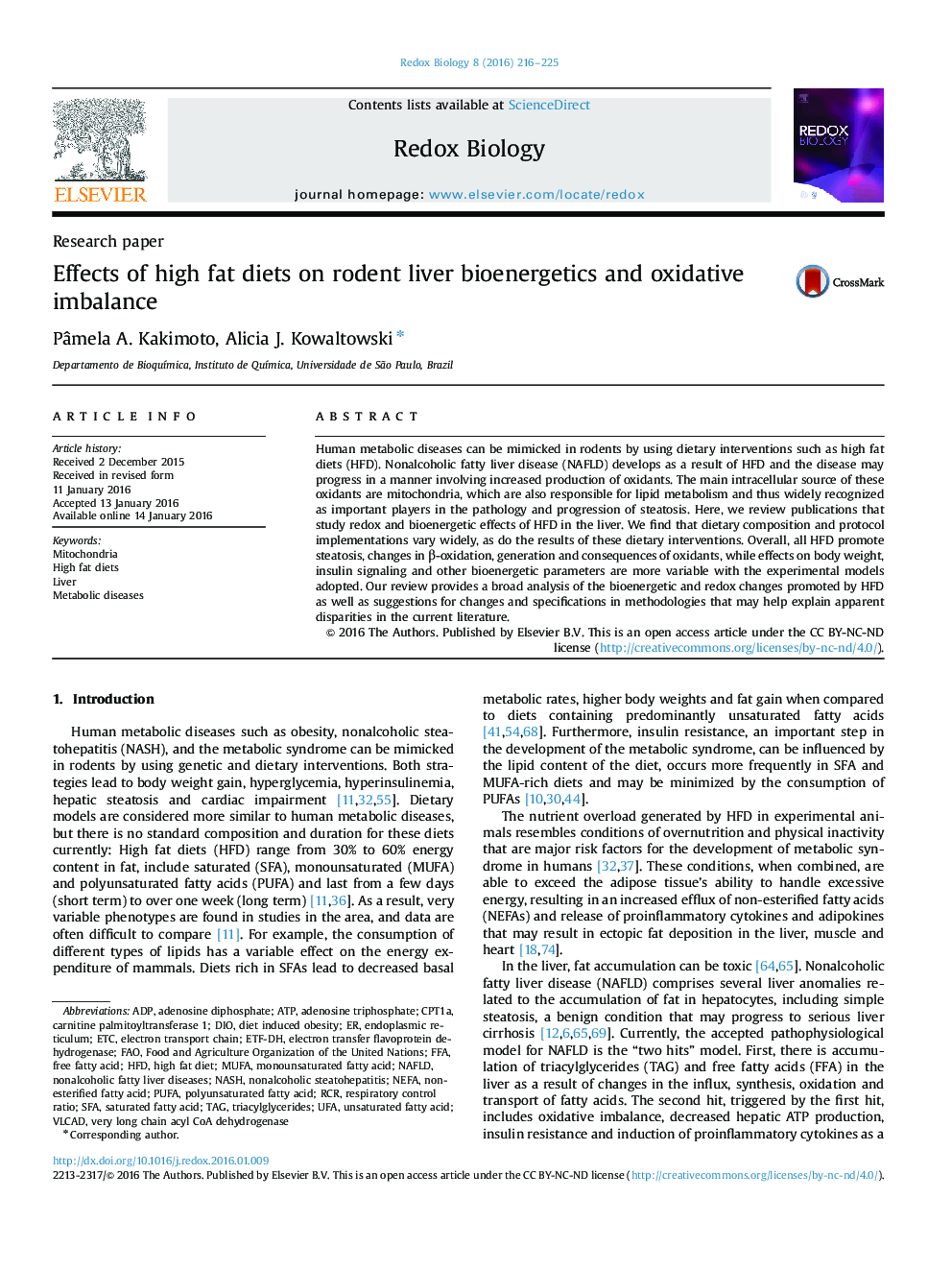| کد مقاله | کد نشریه | سال انتشار | مقاله انگلیسی | نسخه تمام متن |
|---|---|---|---|---|
| 1922868 | 1535842 | 2016 | 10 صفحه PDF | دانلود رایگان |
• High fat diets (HFDs) induce steatosis, even with no weight changes .
• HFDs activate β-oxidation.
• HFDs promote oxidative imbalance.
Human metabolic diseases can be mimicked in rodents by using dietary interventions such as high fat diets (HFD). Nonalcoholic fatty liver disease (NAFLD) develops as a result of HFD and the disease may progress in a manner involving increased production of oxidants. The main intracellular source of these oxidants are mitochondria, which are also responsible for lipid metabolism and thus widely recognized as important players in the pathology and progression of steatosis. Here, we review publications that study redox and bioenergetic effects of HFD in the liver. We find that dietary composition and protocol implementations vary widely, as do the results of these dietary interventions. Overall, all HFD promote steatosis, changes in β-oxidation, generation and consequences of oxidants, while effects on body weight, insulin signaling and other bioenergetic parameters are more variable with the experimental models adopted. Our review provides a broad analysis of the bioenergetic and redox changes promoted by HFD as well as suggestions for changes and specifications in methodologies that may help explain apparent disparities in the current literature.
Figure optionsDownload as PowerPoint slide
Journal: Redox Biology - Volume 8, August 2016, Pages 216–225
